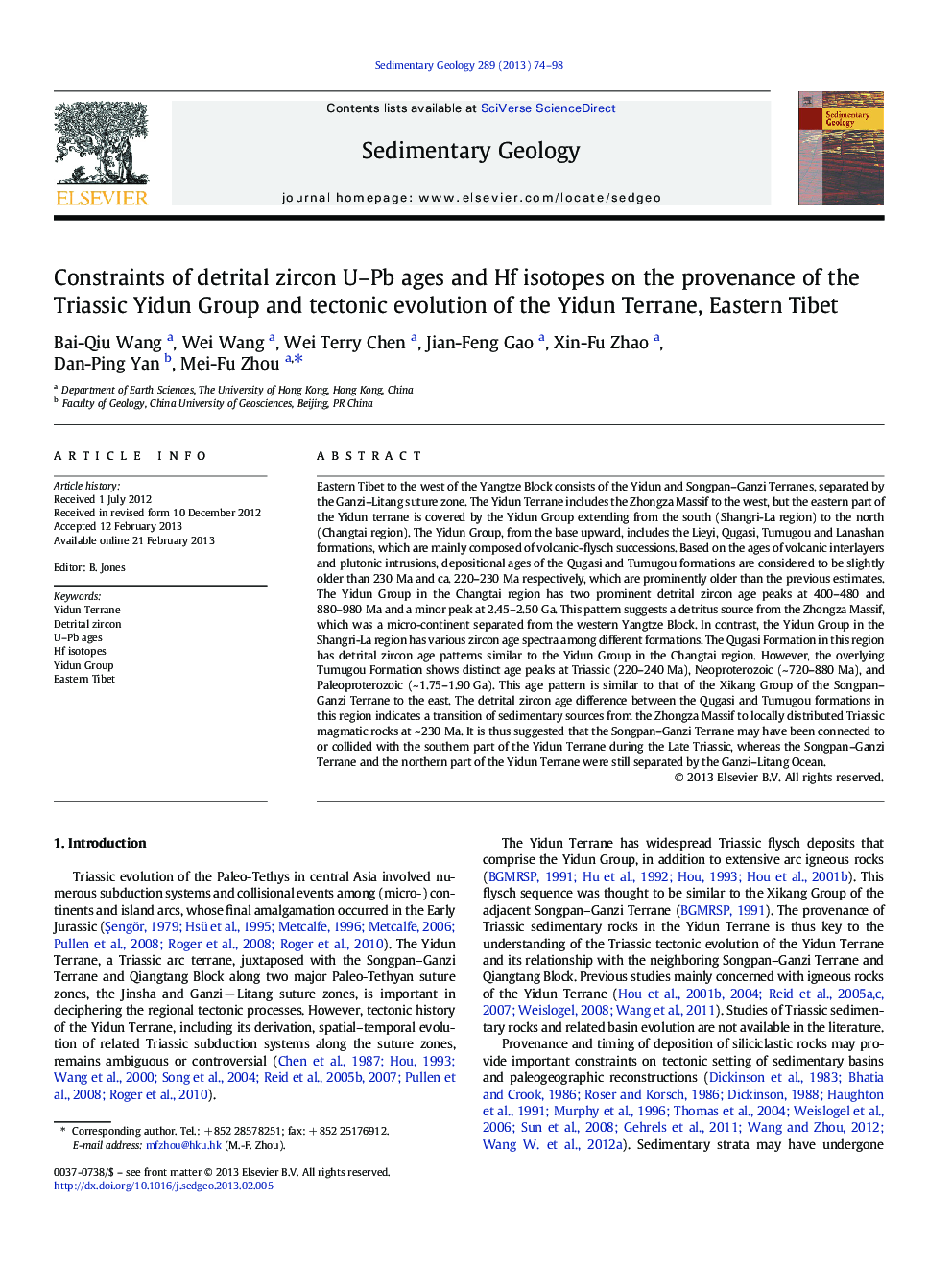| کد مقاله | کد نشریه | سال انتشار | مقاله انگلیسی | نسخه تمام متن |
|---|---|---|---|---|
| 4689586 | 1636074 | 2013 | 25 صفحه PDF | دانلود رایگان |

Eastern Tibet to the west of the Yangtze Block consists of the Yidun and Songpan–Ganzi Terranes, separated by the Ganzi–Litang suture zone. The Yidun Terrane includes the Zhongza Massif to the west, but the eastern part of the Yidun terrane is covered by the Yidun Group extending from the south (Shangri-La region) to the north (Changtai region). The Yidun Group, from the base upward, includes the Lieyi, Qugasi, Tumugou and Lanashan formations, which are mainly composed of volcanic-flysch successions. Based on the ages of volcanic interlayers and plutonic intrusions, depositional ages of the Qugasi and Tumugou formations are considered to be slightly older than 230 Ma and ca. 220–230 Ma respectively, which are prominently older than the previous estimates. The Yidun Group in the Changtai region has two prominent detrital zircon age peaks at 400–480 and 880–980 Ma and a minor peak at 2.45–2.50 Ga. This pattern suggests a detritus source from the Zhongza Massif, which was a micro-continent separated from the western Yangtze Block. In contrast, the Yidun Group in the Shangri-La region has various zircon age spectra among different formations. The Qugasi Formation in this region has detrital zircon age patterns similar to the Yidun Group in the Changtai region. However, the overlying Tumugou Formation shows distinct age peaks at Triassic (220–240 Ma), Neoproterozoic (~ 720–880 Ma), and Paleoproterozoic (~ 1.75–1.90 Ga). This age pattern is similar to that of the Xikang Group of the Songpan–Ganzi Terrane to the east. The detrital zircon age difference between the Qugasi and Tumugou formations in this region indicates a transition of sedimentary sources from the Zhongza Massif to locally distributed Triassic magmatic rocks at ~ 230 Ma. It is thus suggested that the Songpan–Ganzi Terrane may have been connected to or collided with the southern part of the Yidun Terrane during the Late Triassic, whereas the Songpan–Ganzi Terrane and the northern part of the Yidun Terrane were still separated by the Ganzi–Litang Ocean.
► The Yidun Group formed in two depocenters (N and S) within the Yidun Terrane.
► N depocenter was sourced from Zhongza Massif.
► S depocenter was sourced from Zhongza Massif, local magmatism and Yangtze Block.
► S depocenter recorded a transition from passive margin to magmatic arc setting.
Journal: Sedimentary Geology - Volume 289, 1 May 2013, Pages 74–98